The knowledge about how to tell when carrots are ready would be handy, especially if you are planning on growing the carrots on yourself.
Feel free to have your own carrot garden or even turn into a carrot farmer if you feel like it. But you need to understand the entire guide and proper gardening if you want your carrot garden to be successful.
So, what you need to understand about carrots, anyway?
What is Carrots?
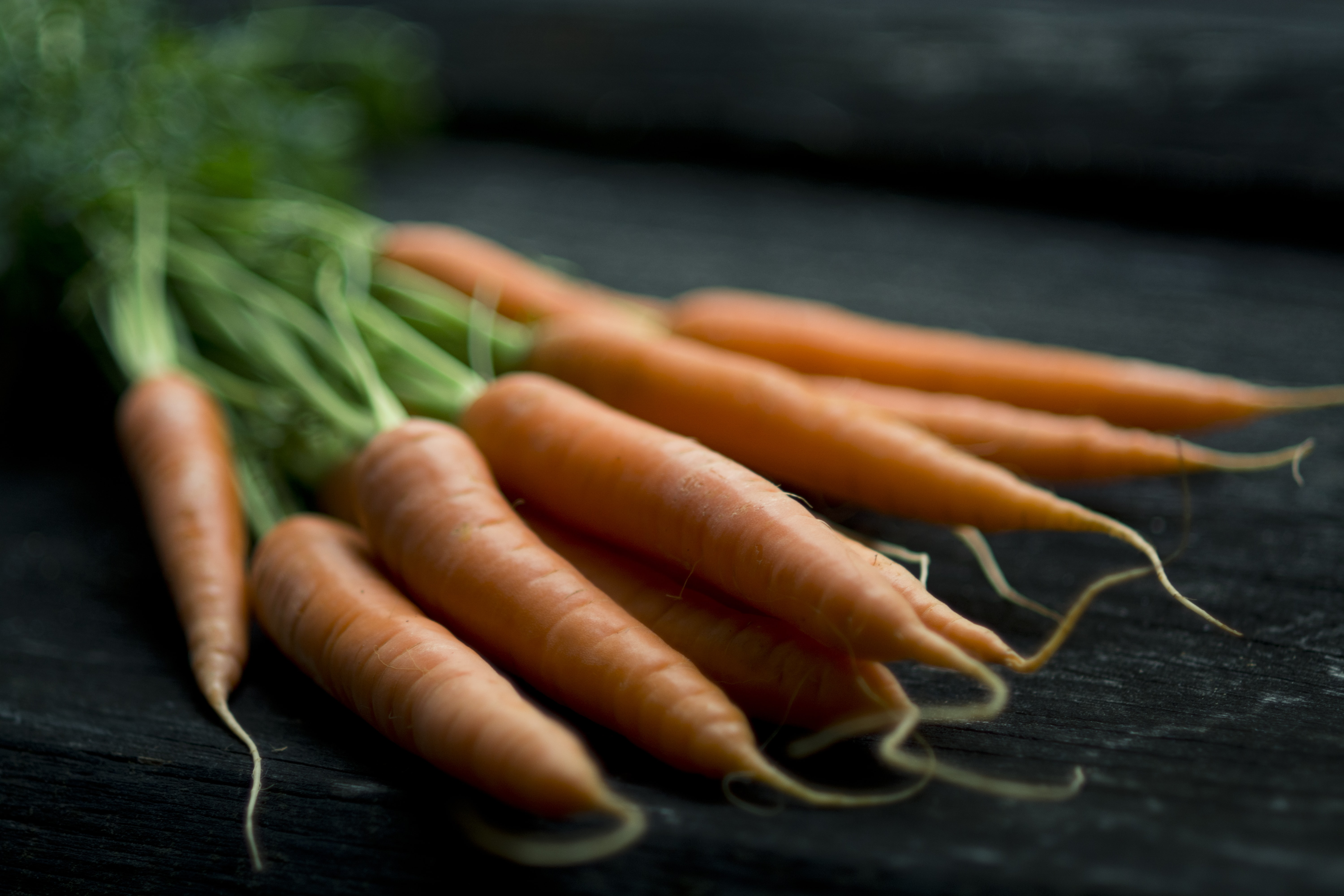
Carrots are cold and hardy biennials that can even survive in winter time. In the US, carrots are divided into 2 major groups: the western and eastern types.
Eastern cultivars are often coming in yellow or purple. The appearance is similar to domesticated carrots in Persia (or Iran today).
On the other hand, the western cultivars are the orange carrots (which we are all familiar with).
This type of carrots was developed in the Netherlands around 500 years ago.
Besides the yellow, orange, and purple carrots, expect to find red carrots. This type has more lycopene (or the plant nutrient antioxidant).
There are also white carrots that are sweet and mild. In terms of forms, shapes, and length, carrots can be stubby and short, slender and long, or even round (similar to radishes).
So, your options for carrots are pretty plentiful.
How Long Do Carrots Take to Grow
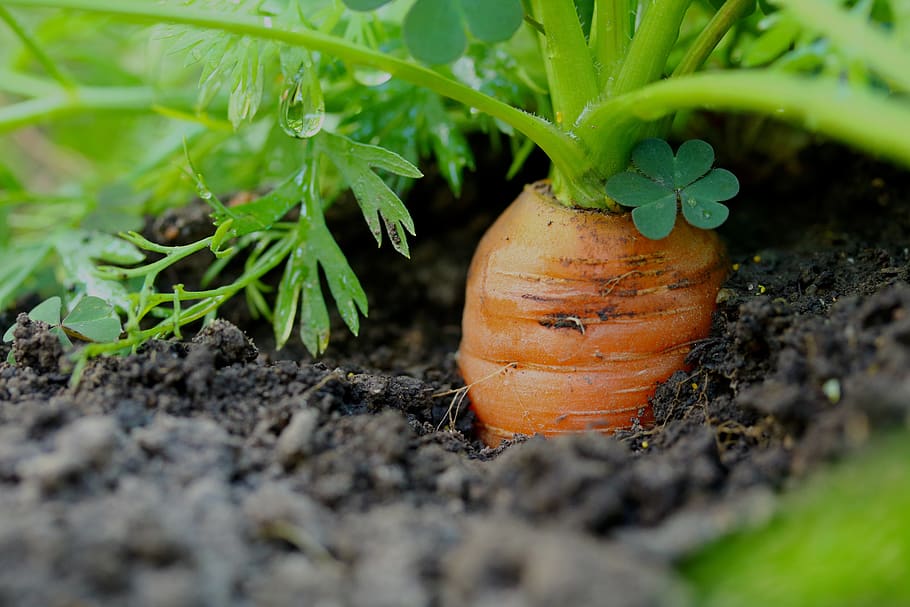
In the standard size, it takes at least 50 days to 80 days for carrots to reach maturity, starting from the seed to the harvesting time.
However, you should be able to harvest baby carrots in around 30 days. At this point, they should be around your pinkie’s width, at least.
Now that you know the total length of the planting time, you can prepare your garden and plan up your gardening time.
Growing Your Carrots on the Garden
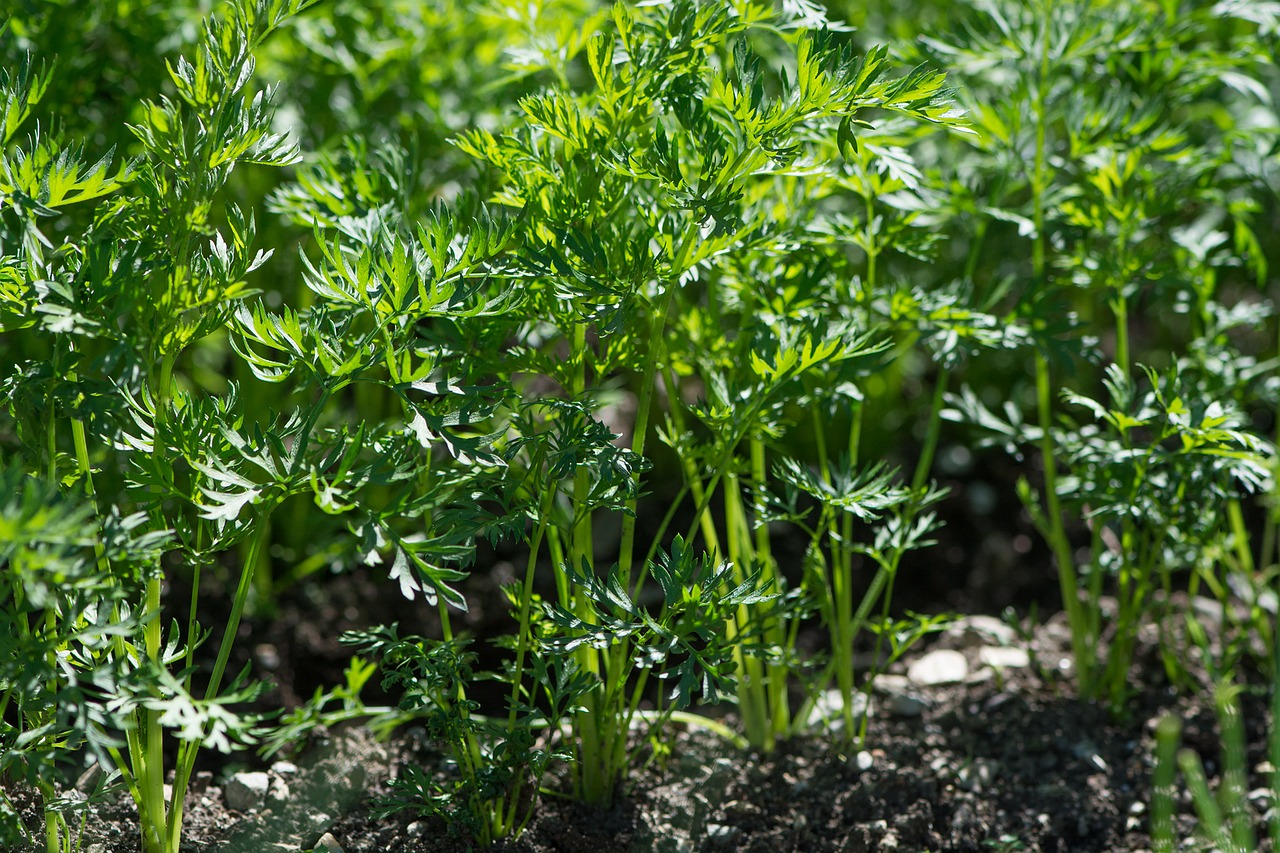
In spring time (or early summer), you can prepare the garden bed. Prepare the safety goggles, closed-toe shoes, and garden gloves so you can start till the garden bed.
You need to remove the plant debris, rocks, and sticks. You should use a well prepared (the commercial type) garden soil and also use the well-decomposed compost.
Dig for 12 inches in depth and within 2 inches (to 4 inches). Plant around ¼ inch of depth (1/2 inch is also okay) with an inch apart. It should be placed in rows having 12 inches to 24 inches rows apart.
Make sure that you SOAK the (carrot) seeds in warm water before. Do it for several hours or at least an overnight.
After you have placed the seeds, cover them lightly by using vermiculite, peat moss, or moist soil. Make sure that it stays moist until you see the seeds germinate.
It should take around 14 days to 21 days. Carrots will germinate well within 45 degrees of Fahrenheit. Cooler temperature would slow down the process.
If you live in colder climate areas, you may want to cover your carrots with (thick layer of) straw mulch. It would protect them from the (late-spring) freezes.
If you live in the areas where the winter climate is mild, you can plant your carrots in fall, so you can have your own winter garden.
Carrots would grow best within 60 degrees to 65 degrees Fahrenheit. After 60 days, check the carrots regularly.
You should know how to tell when carrots are ready by looking at their appearance.
Growing Carrots in a Pot
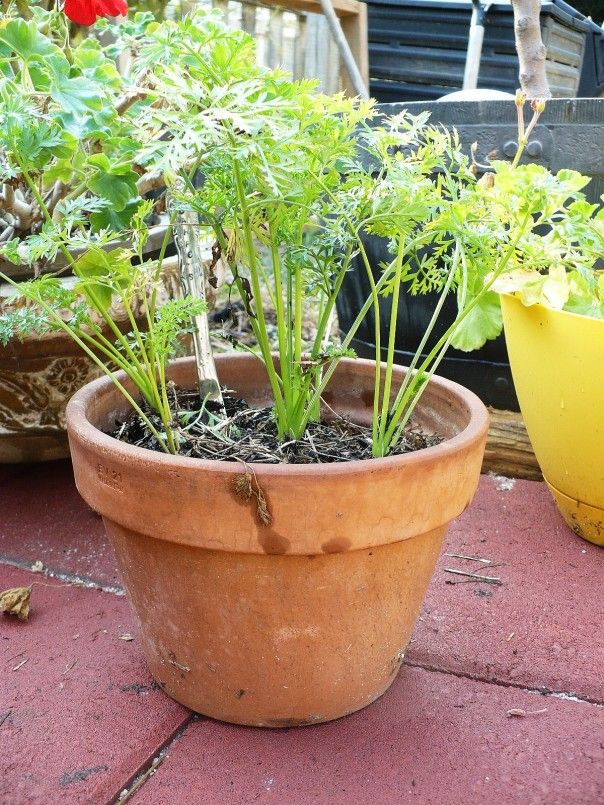
What if your soil is boggy, rocky, or poor? No need to worry. You can grow carrots in raised beds or in containers.
Use round flower pots and plant your seeds within a circular pattern. You can also use raised beds or rectangular (or square) containers so you can plant the seeds in rows.
There are several carrot variants that are just perfect for containers or indoor gardening. Consider Little Finger (which is 2 inches to 4 inches long), Royal Chantenay (5 inches to 6 inches), or the Round Romeo or Thumbelina.
Make sure to use a special potting soil, which is organically rich, to ensure the success of the process.
Monitor and observe your carrots closely. You don’t want the potting mix to dry out. Keep it moist.
How to Care Your Carrots
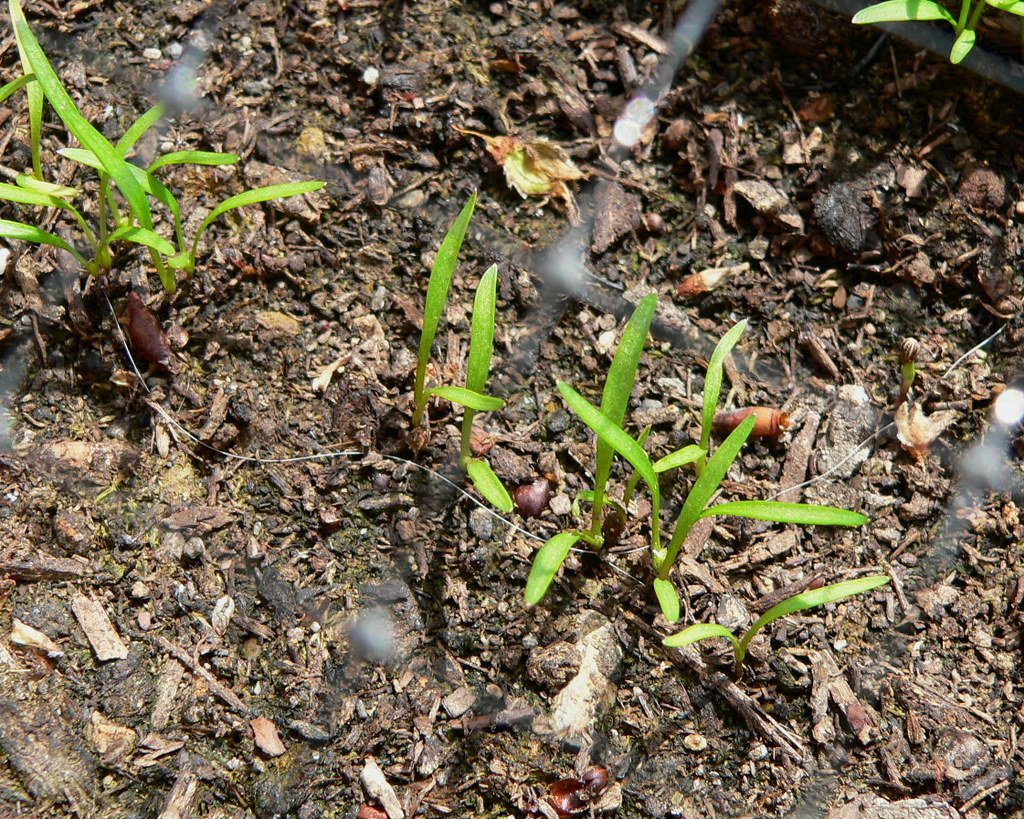
When your seedlings have reached 2 inches in height, thin them out. Space each plant by giving them 2 inches of distance.
Snip the top side off with sterilized scissors. Leave the roots alone and just pull the weaker seedlings up.
Once it has reached 30 days, you can begin harvesting from your garden. You can pick every other seedling which is great as baby carrots and include them in your cooking.
After 80 days, you can enjoy the ‘adult’ carrots and you definitely understand the signs of how to tell when carrots are ready.
If there are weeds, remove them immediately. Don’t let them linger around so they won’t disturb your carrots.
Can you fertilize the carrot bed? Of course you can! Side dressing it with the compost and do it midseason.
Another alternative is to apply the low nitrogen of slow release 5-10-10 fertilizer.
Do it around 6 weeks after the initial planting. Don’t forget to water AFTER giving them fertilizers.
You want to keep the soil moist evenly. Don’t forget to mulch along the rows.
Make sure that the mulch is around 2 inches to 4 inches away from the (carrot) tops. When you can start seeing the carrot shoulders (right above the soil), brush mulch over (just a little) so the carrots won’t turn bitter and green.
The carrots would reach the diameter of ¾ inches to an inch between the 50 and 80days period. This is how to tell when carrots are ready.
How to Harvest Carrot Seeds
Not many people know this, but carrots do produce seeds. Aside from knowing how to tell when carrots are ready, you should also learn about the seeds and whether they are useful for your carrot farming.
When we are talking about carrot seeds, they aren’t the real seeds (which apply in a botanical sense). Carrot seeds are actually dry fruits, known as schizocarps.
Carrots aren’t fruit, so it’s logical if you can’t find any seeds inside them or on them.
Carrots’ edible parts are growing inside the ground, while the (wide) end would be visible at the soil’s top surface. That end part has this round mark where the leaves grow.
The leaves themselves are the deep green and big soft bunch looking similar like a fern.
When carrots are ready, they will send tall stem producing flowers – and seeds in the end. The seeds are small with brown-ish appearance and around 1mm in length. An ounce of seeds is predicted to have around 8000 of them.
A pound will have 250,000 while a teaspoon will have around 2500. Carrots have fruit cluster in the bird nest shape that is great for seed dispersal.
The stalks are ready to take up and retain moisture (known as hygroscopic).
It’s handy when it’s dry. When they are ready for seed dispersal, they would bend outwards and the fruits are exposed to the animals and winds.
When it is wet, they would bend inwards. It would form a next structure protecting the seeds.
What about the seeds’ functionality in the knowledge of knowing how to tell when carrots are ready?
If you are planning on planting a new carrot from the seeds, it may not be an overall good idea.
For carrot farmers, this may not be the best idea or the best solution, and there are reasons why it happens.
First of all, carrots are biennial plant, meaning that they need at least 2 years to mature completely and they can finally produce seeds.
Second, if buy carrot seeds from the supermarket, they are most likely F1 hybrids. Hybrids mean that the seed is resulted from 2 different parents.
One may be fat and big while the another one has nice color and fast growing.
Seed specialist and plant breeder would use pollen (from one) to fertilize the other flowers, with the purpose of producing carrots with unique and distinctive characteristics that would be suitable for the market, like carrots with deep color or better resistance (to fly), long and thin, and things like that.
The carrots will likely resulted in the favorable traits that farmers want, but they may not be so ideal for consumers like you. The carrots may not taste good.
And the biggest issue is that the F1 hybrids are basically sterile. So, in the event that you plant the F1 carrots and then harvest the seed (even after it takes 2 years!), the seed can’t grow.
In the end, you may not get any flower or seed. At all. Or you may get a sterile plant. Or you may get a completely different result that is totally different from the original.
How Can You Tell when Carrots Are Ready for Harvesting?
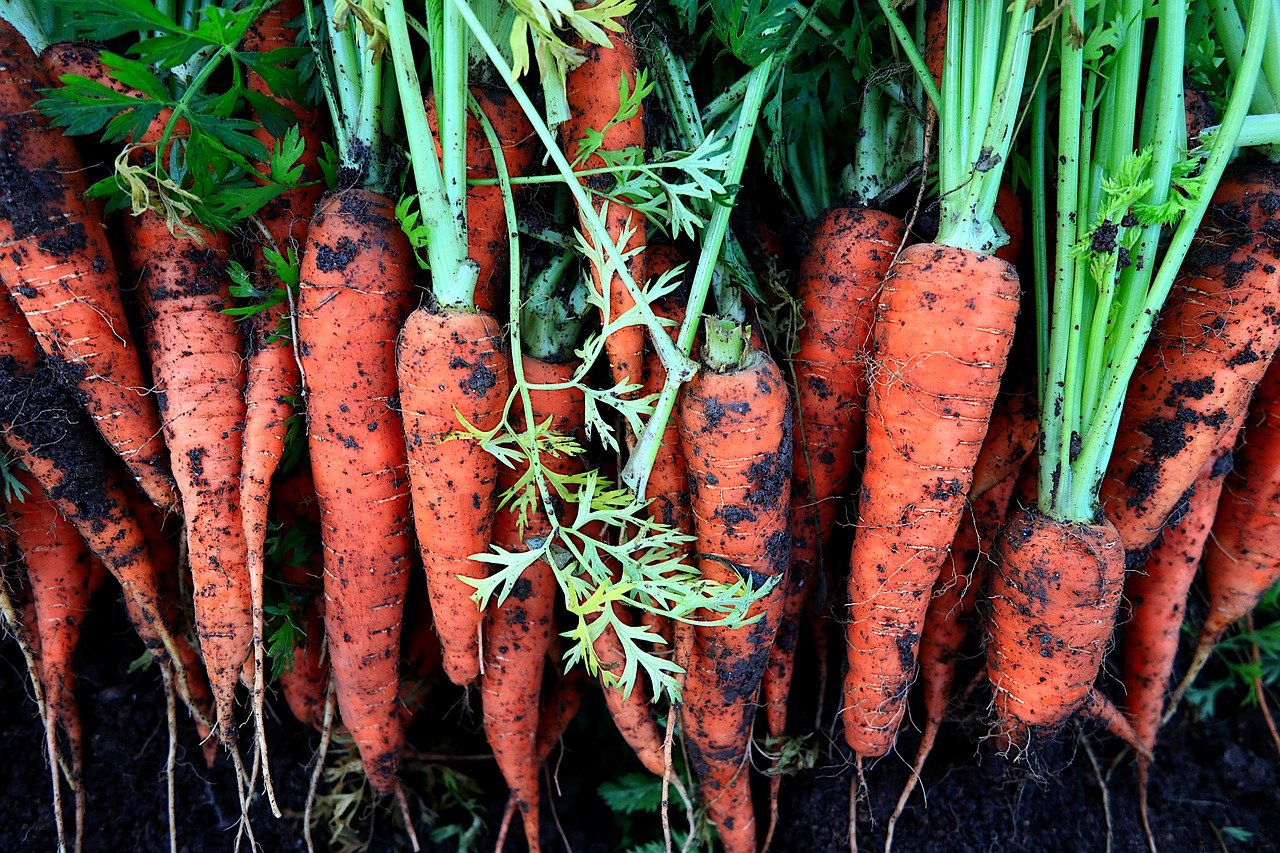
You have learned about growing carrots as your crop. However, aside from knowing how to tell when carrots are ready, you should also learn about how to harvest them.
There are ways to make sure that the carrots are ready and you won’t damage them (or the soil) during the harvesting time. Ensure that the root diameter is right and then loosen your harvest garden beds.
Then you can moist the soil, pull them, cut the greens off, and then store them correctly.
Check the Diameter
In general, the carrots should be ready in between 70 and 100 days, but it’s your observation power that can determine how to tell when carrots are ready.
Simply by checking the big roots can give you away. They would bulge up and protrude out from the ground. What if the roots don’t bulge up? Brush the soil covering the tops so you can see the size of the roots.
At this stage, you are free to choose the carrots, but they should be around ½ inch (in diameter) so you can get a decent carrot.
Hydrate the Carrots
When you want to pull the carrots, make sure that the soil is damp so you won’t break the carrots. Do it after you irrigate the carrots or after raining.
Don’t forget to loosen the soil around the carrots too. The soil should be moist (but not soggy) so you won’t have to deal with the messy digging and removing.
If the soil is moist, then you know that it is the perfect time to start pulling the carrots. Try it first; give it a little tug and pull, and you should be able to slide the carrots out the ground easily.
If you feel a resistance, stop. Loosen the soil more. Brush off the sand, mud, or soil if you are about to store the carrots.
There is no need to wash them, unless you are about to consume them
When to Harvest Carrots?
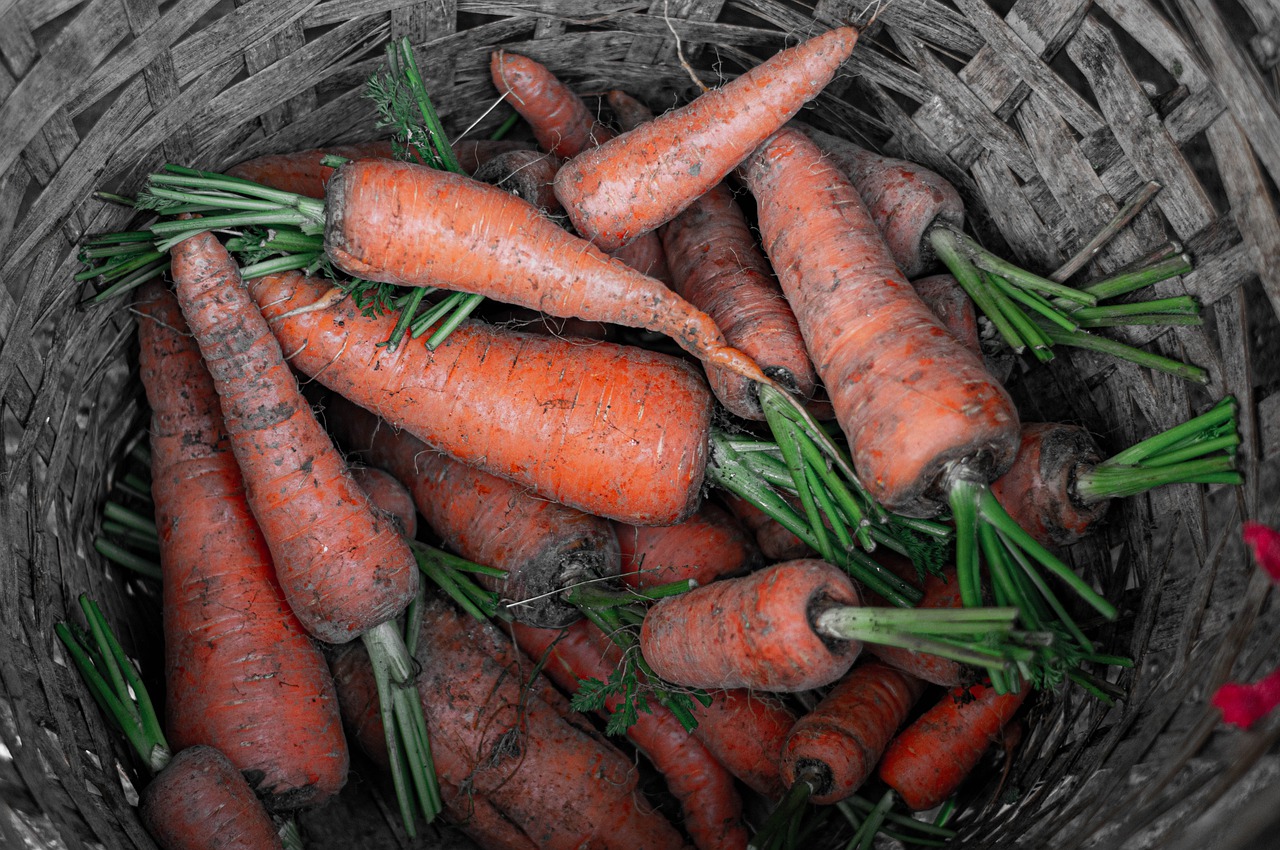
Aside knowing how to tell when carrots are ready, you should also know when to expect the carrots to be ready. If you want to enjoy the carrots in summer, plant them within the early spring.
Enjoy only some of the carrots in summer and you want to leave some for autumn, pull up the roots carefully.
If you want to get the tastiest and sweetest carrots, harvest them in fall. They produce sweet taste after the temperature dip – below freezing.
The lower temperature will ‘force’ the plant to store sugar within the roots; not the greens.
Some people like to keep their carrots on the ground. They do it during winter.
They make use of the earth as outdoor refrigeration. If you prefer this method, dig the crops anytime during winter time until the soil has frozen solid.
But you need to dig them before spring time (before the temperature starts warming up). The best time is to do it in early spring or late winter.
Just make sure to do it before the new (top) growth appears.
In the end, you can grow your own if you are interested in having a small batch ready for the kitchen. It doesn’t hurt to know how to tell when carrots are ready, especially if your family likes it so much and you have your own garden